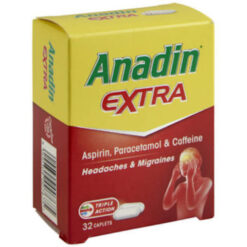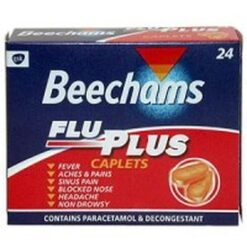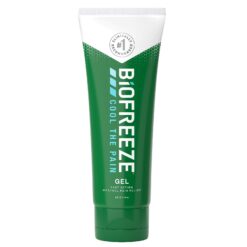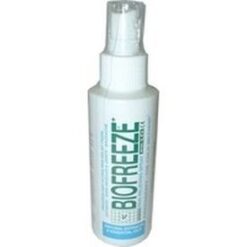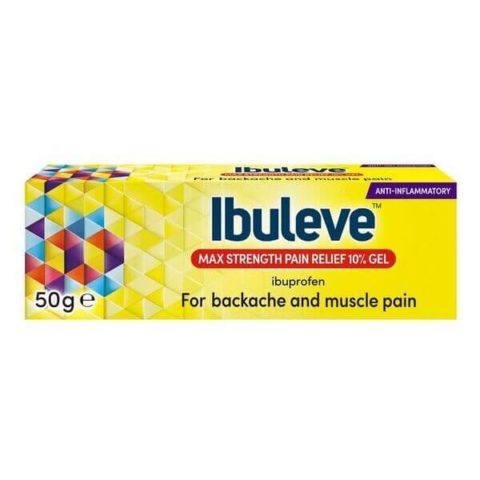
From £5.09
Variety of delivery options including next day & free delivery.
Pharmacy, clinic and prescribers based in Greater Manchester.
Start your treatment with a quick and free online consultation.
Variety of delivery options including next day & free delivery.
Pharmacy, clinic and prescribers based in Greater Manchester.
Start your treatment with a quick and free online consultation.
Fill in a quick online consultation for our licensed pharmacists to review.
Our pharmacists will review your treatment to ensure it’s suitable.
Your treatment will be delivered to your door quickly & discreetly.
| Attribute | Details |
| Medication Name | Ibuleve Gel
Ibuleve Maximum Strength Gel |
| Type and Form of Medicine | Topical Gel |
| What it Does | Pain relief, anti-inflammatory |
| Active Ingredients | Ibuprofen |
| Strength | 5% and 10% w/w |
| Size | 30g, 50g |
| Patient Information Leaflet | Ibuleve Gel Patient Information Leaflet |
Ibuleve Gel works directly where it hurts. This easy-to-apply gel contains ibuprofen, which goes straight through your skin to target pain and inflammation in muscles and joints. Available in two strengths – regular 5% Gel and Maximum Strength 10% – it gives you effective relief right where you need it.
Ibuleve Gel targets everyday aches and pains and reduces swelling and inflammation. It’s particularly good for:
Both regular Ibuleve and Maximum Strength work in the same way – the difference is the strength you need. For recent injuries or mild pain, choose the regular strength option. For long-term or more intense pain, Maximum Strength gives you extra power where you need it.
When you apply Ibuleve Gel, it passes through your skin to reach the painful area underneath. Once there, it blocks the body’s production of certain chemicals (called prostaglandins) that cause pain and swelling.
Because the gel works directly on the painful area rather than going through your whole body as tablets do, it can effectively pinpoint the pain with less chance of side effects. This makes it a practical choice for many people who want targeted pain relief.
Ibuleve Gel is suitable for adults and children aged 12 and over. However, you should not use this gel if you:
If you have any underlying health conditions or are taking other medications, get a doctor’s or pharmacist’s advice before using Ibuleve Gel.
You can use Ibuleve Max Strength pain relief gel up to three times a day, leaving at least four hours between applications. Do not use more than the recommended amount.
For best results, follow these simple steps:
Carry on using the gel in this way as long as needed, but if symptoms haven’t improved after two weeks, speak to your doctor or pharmacist.
Like all medications, Ibuleve Gel can cause side effects, although not everyone will experience them:
For a full list of side effects, please refer to the patient information leaflet of the specific product.
Active Ingredients: Regular Ibuleve contains 5% ibuprofen, while Maximum Strength contains 10% ibuprofen.
Other Ingredients: Hydroxyethylcellulose, sodium hydroxide, benzyl alcohol, isopropyl alcohol, and purified water.
EXCELLENT
Most people start to feel relief within the first hour of application. For best results, use as directed for the first few days of treatment.
Taking oral ibuprofen alongside Ibuprofen gel is not recommended, as this could lead to too much ibuprofen in your system. If you need additional pain relief, paracetamol is a safer choice alongside the gel.
While it’s unlikely to overdose when using as directed, always follow the recommended amount. If you accidentally apply too much or swallow the gel, contact your doctor immediately.
Yes, using paracetamol tablets alongside Ibuleve Gel is safe, as they work differently to relieve pain.
Only apply Ibuleve Gel during pregnancy or breastfeeding if your doctor specifically says you can.
Yes, Ibuleve can help relieve pain and inflammation associated with mild arthritis. The Maximum Strength version may be particularly helpful for arthritis pain.
Ibuleve is suitable for both vegans and vegetarians as it contains no animal-derived ingredients.
Yes, Ibuleve is a brand name for Ibuprofen gel. The active ingredient is the same as in other ibuprofen gels, though the strength and additional ingredients may vary between brands.
Ibuleve Gel is a powerful, fast-acting treatment for muscle and joint pain, making it an ideal choice for those wanting quick, targeted relief without taking tablets.

Dr Hussain Ahmad
Page content authored by Mr Mohammed, last reviewed by Amjad Khan on 20th August 2024.
